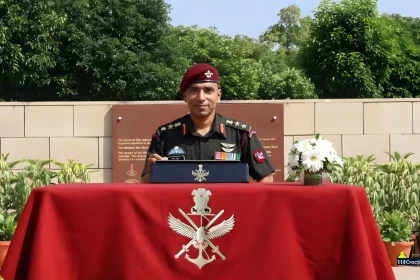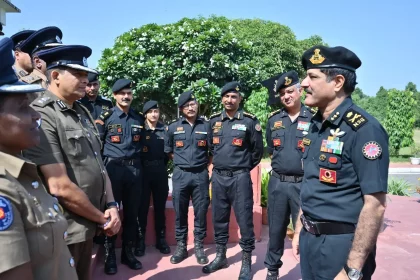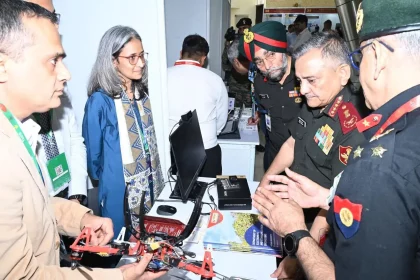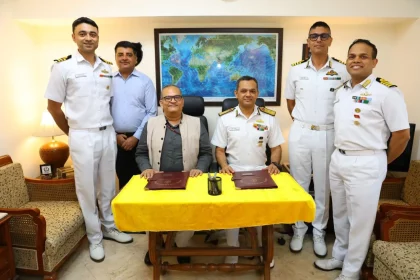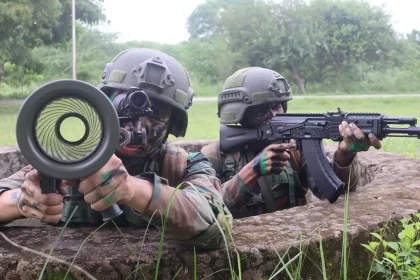Colonel Punit Aswal Leads 7 PARA (SF) in Diamond Jubilee Tribute at National War Memorial
The battalion’s motto, “Never Out of the Fight,” embodies the relentless spirit of its soldiers who operate in the toughest…
NSG Commences First-Ever Crisis Management Course for Sri Lankan Police Officers
NSG Launches First-Ever Crisis Management Course for Sri Lankan Police Officers to Boost Regional Counter-Terrorism Preparedness.
CDS Inaugurates Tri Services Academia Technology Symposium (T-SATS) in New Delhi
CDS General Anil Chauhan launches India’s first Tri Services Academia Technology Symposium at Manekshaw Centre.
MoD, Ministry of Culture Sign MoU for Stitched Ship Project – INSV Kaundinya
INSV Kaundinya to revive ancient Indian shipbuilding and sail historic Indian Ocean trade routes.
Agniveer Training Underway at 11 Gorkha Rifles Regimental Centre
Over 600 Agniveers undergo rigorous training to become future soldiers at 11 Gorkha Rifles Centre.
Garhwal Rifles Launches Mount Mukut East Expedition in Garhwal Himalayas
Surya Warriors set out to conquer Mount Mukut East, embodying courage and national pride.

